Showing 25–36 of 66 results
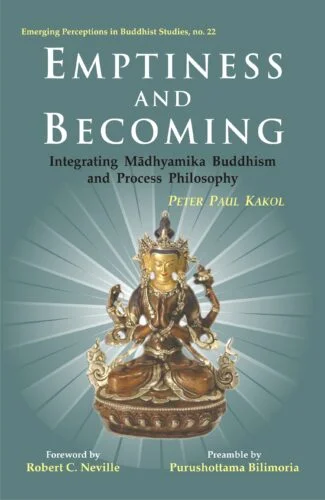
The book presents a detailed comparison of process philosophy and Màdhyamika Buddhism, analysing the similarities and differences between the two. It attempts a creative integration between the two and introduces a new philosophy, Process Buddhism.
The book presents a detailed comparison of process philosophy and Madhyamika Buddhism, analysing the similarities and differences between the two. It attempts a creative integration between the two and introduces a new philosophy, Process Buddhism. Process thought underscores the view that reality is a cumulative process of perspectival and experiential events. Peter Kakols work, in a remarkable foray into this area of philosophy, shows that the Madhyamika teaching, which essentially stresses the emptiness of emptiness, and process theory of worldviews are not incompatible with each other but are rather complementary aspects of the same theory.
In this meticulous work where the analysis involves careful exposition of both sides, Kakol notes that the fundamental compatibility between them is that both views become contradictory if seen as independent and so must be constantly transcended in a process of gradual purification and de-reification (or nominalisation). Kakol reveals an ability to situate process philosophy and Madhyamika Buddhism in the context of larger movements, both in their times of origin and now. He examines the views of not just Buddhist scholars and process philosophers but a range of social and political thought too.
The work will fascinate scholars and students of Process Philosophy and Madhyamika Buddhism.

With about 8,000 articles, this Encyclopaedia presents a panorama of Buddhist deities, demigods, godlings, demons the whole range of good and evil forces with the spotlight on the concretized, recognizable forms and their subtle symbolism.
Beginning with a few aniconic symbols, like foot prints, a throne, the Bo tree or stupas, in the prechristian Indian art, Buddhism came to evolve a variety of picturesque representations of a Self-Existent, Superimmanent Principle: in myriad forms and emanations that range from the superbly magnificent to sheerly grotesque. Endowed with diverse iconographic attributes, Buddhist deities/saints/demons have grown, over the rolling centuries, into bewildering numbers, legions. Which all, leave alone the neophytes, not even the best of scholars can recognize! The names of the divinities and their cultural/regional perceptions owing largely to the plurality of Buddhist pantheons, have only gone on to further complicate their identification. Unveiled, for the first time, in the pages of this Encyclopaedia, is a panorama of Buddhist deities, demigods, godlings, saints and demons, with spotlight on the concretized, recognizable forms and the subtle symbolism they involve. In its nearly 8000 alphabetically arranged articles of varying lengths, it mixes gods and demons, bhiksus and btsans, the aesthetic and the grotesque in fact, nearly the whole range of good and evil forces which the inspired among the adherents of the Buddhist faith conceived so ingeniously! Professor Bunce has painstakingly marshalled a wealth of data from authoritative language sources, notably, Sanskrit, Pali, Tibetan, Newari/Nepalese, Chinese, Mongolian, Japanese, Siamese/Thai, Annamese/Viet Namese, Javanese, and Sinhalese, in his effort to capture almost the entire framework of Buddhist divinities: a multi-pantheonic framework, together with its classes, groups and hierarchies, ranging from Adi-Buddha to Arhats and yet beyond. Himself a distinguished scholar of Oriental/Buddhist Art, Dr. Bunce incorporates, in scrupulous detail, the iconographic attributes of deities: like colours, heads/eyes, hands, objects held, body, feet, asanas, mudras, ornaments, vahanas, emanations, and whether calm or wrathful which, with a generous supplement of illustrations: about 300 elegant line-drawings and several colour plates, highlight the distinctiveness of each individual figure. Also included in the Encyclopaedia are users guide, glossaries (of asanas, mudras and attributes), identification charts, a hierarchic table, and bibliographic references. Growing from years of Professor Bunces persevered research and study, this compilation is certainly the first ever to draw together most of the Buddhist divinities/mythological characters, in their distinctly recognizable forms. And is, therefore, indispensable to both the specialists and non-specialists trying to identify each from a whole host of these figural representations.
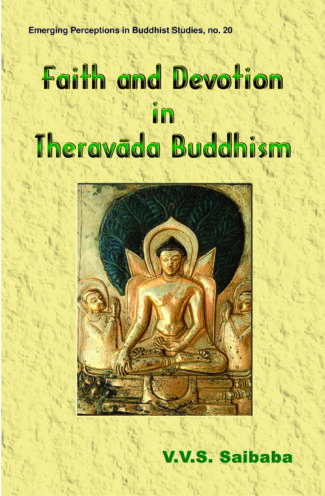
This is an analytical study of faith (saddha), devotion (bhatti) and worship (puja) in the Theravada school of Buddhism. It elucidates these concepts and deals with their objects, viz., gods in general and Buddha in particular as described in the Pali canonical, post-canonical and comment arial literature.
This is an analytical study of faith (saddha), devotion (bhatti) and worship (puja) in the Theravada school of Buddhism. It elucidates these concepts and deals with their objects, viz., gods in general, and Buddha in particular, as described in the Pali canonical, post-canonical and commentarial literature. The first chapter of this book examines the conception of the the Deities and the supernatural; the attributes, knowledge, powers and functions of Buddhist deities; their role as objects of meditation; how Theravada Buddhism is non-theistic and how its basic concepts are incompatible to the conception of Creator God. The second chapter discusses the special attributes, knowledge, powers and functions of the Buddha in the Theravada literature which establishes His supramundane character and spiritual eminence over gods, arhants and pratyekabuddhas. It throws light on the origins of Buddhas deification, his docetic conception and other Buddhological speculations which led him to become an object of highest reverence, adoration and devotion. The third chapter outlines the origin, nature and scope of faith and devotion for the Buddha in Theravada literature; how and why he has been regarded as the object of absolute confidence (saddha), recollection and contemplation (buddhanussati), devotion (bhatti) and worship (puja) and thereby viewed as Bhagavan and compassionate Saviour. The book provides an authentic and comprehensive account of faith (saddha) and devotion (bhatti) in Pali canonical and post-canonical literature of Theravada Buddhist School. This work is an invaluable aid to students, teachers and researchers of Pali literature and Buddhist philosophy.
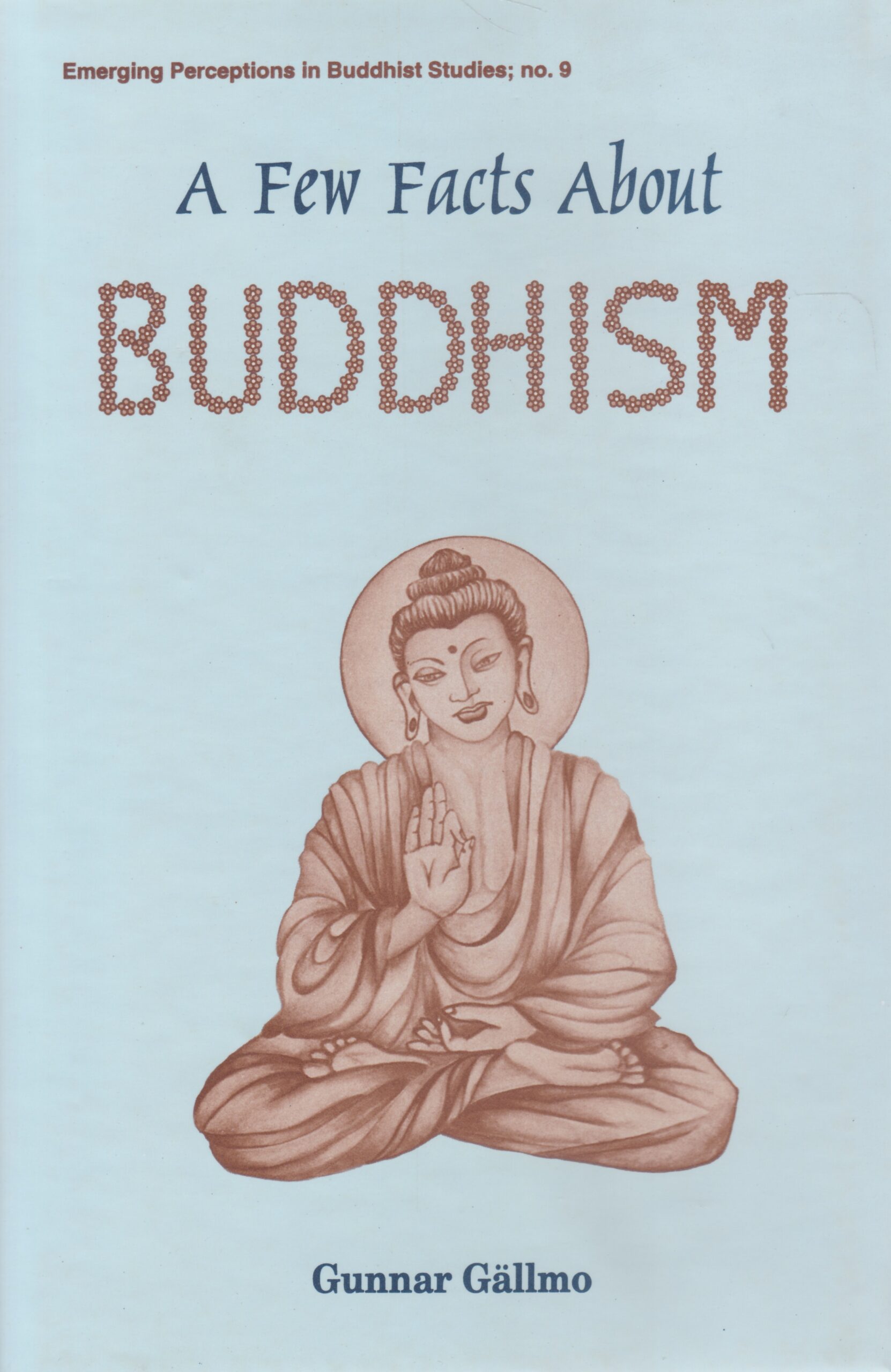
Marshalling facts from the oldest preserved texts, this work studies the Teacher (the Buddha), the Teaching (Dhamma) and the Taught (Samgha) throughout Buddhisms history. It makes a comparative study of Buddhas original teachings and later Buddhist traditions.
Today, when political ideologies/ isms are crashing down and when, at the other end, the great monotheistic religions are trying to survive by turning their backs on logical thinking and intellectual consistency, it might be worthwhile taking a look at the alternatives that by-pass the lopsided views of both materialism and idealism the alternatives that do not have to explain how an omnipotent and all-benvolent God can permit evil, nor how human barbarism can persist doggedly in a progressing world society. And among these alternatives, Gunnar Gallmo rediscovers the oldest existing world religion: the first historically documented case of international (or perhaps non-national) thinking, a teaching that may, more or less, directly or indirectly, positively or negatively, have influenced all later religious, philosophical and political teachings: Buddhism. From the vast corpus of the oldest preserved texts, Gunnar Gallmo marshals facts around Buddhism quintessentially, authentically. His book is a well-knit, at once compelling presentation of the Teacher (the Buddha), the Teaching (Dhamma/Dharma), and the Taught (the Samgha/the Community) throughout the 2500-year-long history of Buddhism: first in India, then in Asia and, finally, today in the world. And since Buddhism is a religion with an actual historical personage as its founder, the author tries to explore how the Enlightened Masters original teaching underwent a change in later tradition, and how the differences between the two have cropped up. With a glossary of Pali/Sanskrit terms and highly significant bibliographic references, this treasury of facts about Buddhism is bound to fascinate scholars and general readers alike.
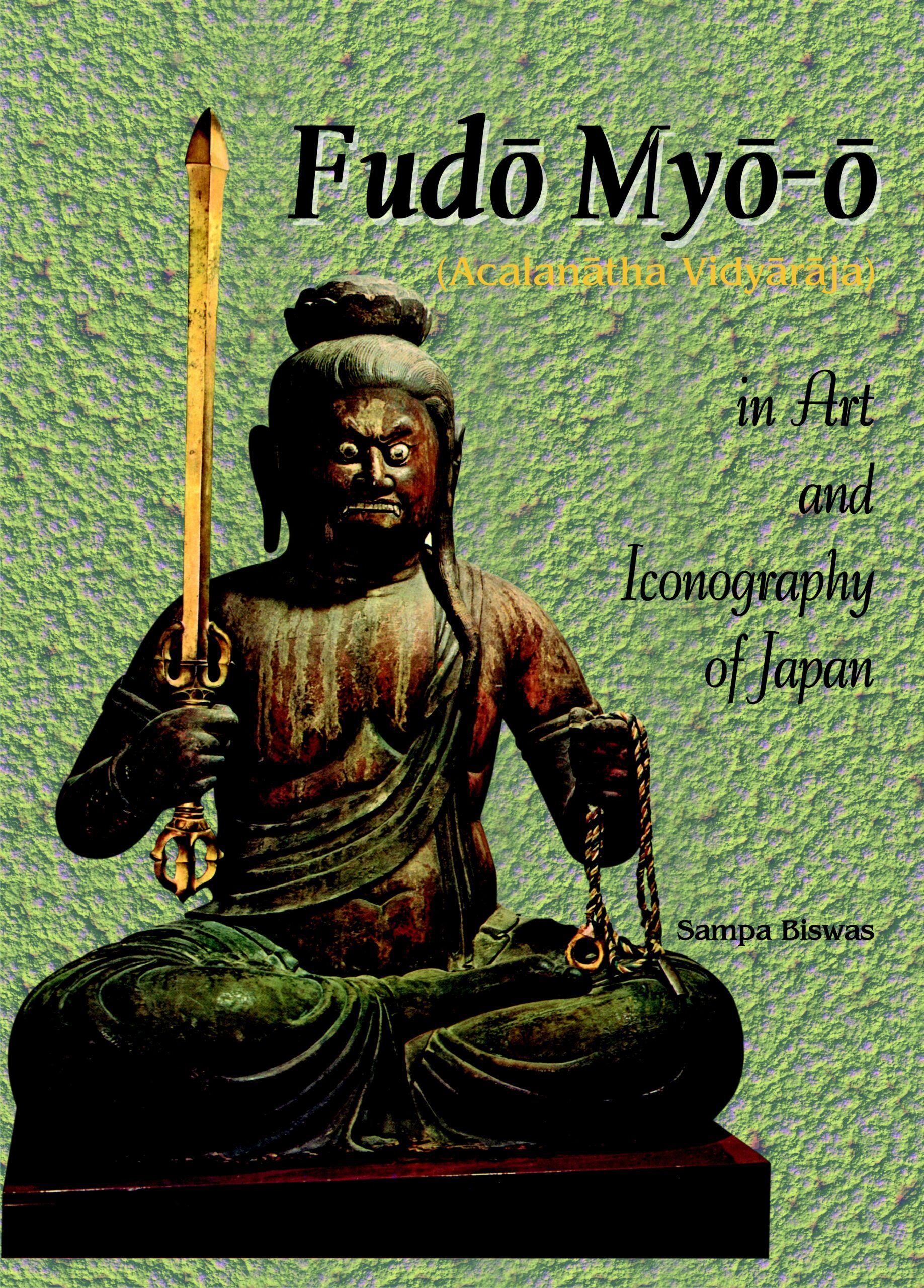
The book discusses the introduction of Buddhism in Japan and its gradual transformation in esoteric doctrines. It also describes Fudo’s iconography, symbolic instruments, mudras, attendants, etc. This work describes the remarkable sculptures, paintings and woodblock prints of Fudo from Heian period.
Shingon Buddhism — esoteric Buddhism brought to Japan from China during the early ninth century — inspired a new spiritual energy that found expression in varied forms, especially in art and iconography. A radical change occurred with the introduction of new deities, among them the Five Great Kings, the most important of them being Fudo Myo-o, the conqueror of all disasters and evil. This book is a study of the concept, iconography and decoction of Fudo in art.
Beginning with a detailed account of the origin of Buddhism and its introduction into Japan, the book focuses on development of esoteric Buddhism in the country. It delves into the uniqueness of Shingon Buddhism rituals which try to evoke the vitality of the three mysteries in the body, speech and thought, the mysteries being transmitted orally from the master to the disciple. Describing Fudo Myo-o as discussed in Buddhist literary sources from India, it takes up his visual representation in painting and sculpture. It discusses the representation of his attendants in art and iconography, symbolic instruments associated with the god in his depiction and interpretations of the mudras (hand gestures, postures, emblems) carried by Fudo. It explains the esoteric meaning attached to various ideas and concepts represented in the visual images.
Supported by numerous illustrations, this detailed and thorough study would enthral students and scholars of Buddhist art and iconography.
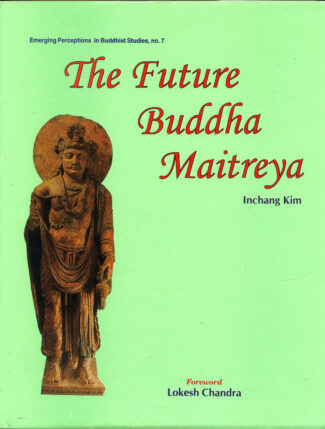
The book highlights the historical evolution of different phases of Maitreya iconography in various regions of the Indian subcontinent. Dr. Kim combines extensive field-work with diverse literary sources to thoroughly explore some problematic issues.
Maitreya is not just one of the myriad divinities of the Buddhist pantheon; he is revered by the devout as the Buddha of the fifth world cycle, the Ultimate Buddha, the Much-Awaited Deliverer, who (like Kalki a would-be incarnation of Visnu in Hinduism) will descend on the earth, in human form, sometime in the distant future and lead people to both enlightenment and the final nirvana. The cult of Maitreya, however, goes as far back as to the second century bc, and even beyond, when perhaps, his images, in varying anthropomorphic forms, came to be chiselled alongside the earliest sculptural representations of the Buddha and Boddhisattvas. Here is the first iconological study to exclusively focus on the Maitreya phenomenon in almost the whole range of Buddhist sculptural art. Exploring the historical evolution of the Maitreya cult, the book admirably highlights the different phases of Maitreya iconography with an in-depth analysis of the images from various regions of the Indian subcontinent Gandhara, Kashmir, Mathura, Sarnath, Nalanda, Orissa, Western Deccan and South India. Dr. Inchang Kim has skilfully combined his extensive fieldwork with diverse literary sources to contextually explore some of the problematic issues to their last thread like, for instance, the genesis of Maitreya cult, its nature in the pre-Christian era, and its role in Hinayana, Mahayana and Yogacara Buddhism. Also spelling out the symbolism of Maitreya iconography, the study specially underscores the iconographic attributes that help not only identify Maitreya, but also distinguish the Buddha of the Future from other Bodhisattvas. Together with a generous supplement of visual material comprising over 240 photographic reproductions with an extensive bibliography and index, the book is invaluable to art historians, connoisseurs/specialists of Buddhist sculptural art and scholars of Buddhist studies.

The study, beautifully illustrated, focuses on the masks of gods, goddesses and demons worn by the Newars of Kath-mandu Valley. It deals with contexts in which the dancers wear the masks and with legends concerning the dances.
The presence of masks as both ritual and art objects is attested among the traditions of mankinds oldest civilisations. Cutting across cultural and geographical barriers, they have exhibited a remarkable range and diversity of meanings throughout history. The present study focuses on the masks worn in the Kathmandu Valley by the main ethnic group, the Newars. A specific aspect of the Newars is that, despite the political dominance of Hinduism, Buddhism is still alive. The masks represent gods, goddesses and demons, but never the dead or the ancestors. The author argues that the reason for the absence of figurations of the dead or ancestors is to be explained by the funerary rituals. There are no memorial monuments or other objects which perpetuate the memory of the deceased: It is through rituals performed after their death that the memory is preserved. The distinction is made between statue-masks and the masks worn during ritual dances. The author focuses on the contexts in which the masks are worn by professional dancers and draws attention to the legends which explain the origin of the dances and their ritual role. Detailed descriptions are given of the dances performed during different festivals in the localities of the Kathmandu Valley. The masks then worn are destroyed and re-made ritually each year by painters. Anne Vergati explains the relation between the dancer as a social person with a social identity and the mask which represents a god or a goddess. The mask is not supposed to hide the face of the dancer but to transform his identity in such a way as to make of him a deity. Supported by numerous illustrations in colour, the book will appeal to historians and connoisseurs of art as well as to scholars of the cultures of the Himalayan regions.
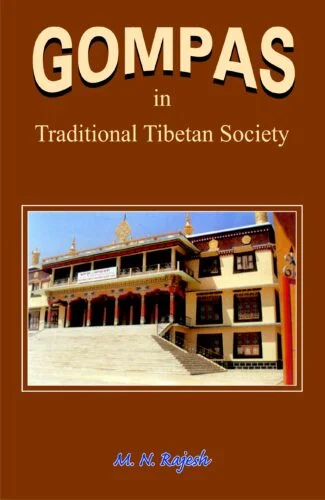
The book examines the gompas of Tibet for their organizational aspects and their role in continuing Buddhism in Tibetan history by performing multifarious functions and institutionalizing the theory of Buddhism so that it could transcend time and space. Consulting rare manuscripts, it also scrutinizes contribution of gompas to study of astronomy, astrology, medicine, and art and architecture.
The importance of the gompa or the Buddhist monastery in Tibetan history cannot be overemphasized: it was the institution that enabled continuity of Buddhism in Tibetan history by performing multifarious functions and institutionalizing the theory of Buddhism so that it could transcend time and space. Here, a scholar in religious studies, Dr. M.N. Rajesh examines the gompas of Tibet from a holistic perspective, focusing largely on its organizational and functional aspects. The book begins with a survey of the gompas Indian origins, viewing the mahaviharas as a prototype of the gompas, and studies contextualization of the gompas in Tibet wherein is described its relation with the superstructure the society. Consulting many old works and some rare manuscripts, the work analyzes the working of the monasteries their hierarchy, rules and rituals, role of the lamas, office of the abbot and other positions of authority, and recruitment and initiation of novices. It also elaborates the contributions of the gompas at different levels socio-economic and political which helped pre-modern Tibet to acheive a high degree of development over the centuries. It takes up for detailed scrutiny services rendered by the gompas in the field of Indic Studies astronomy, astrology and medicine, and in education and art & architecture. The book, with an elaborate index and a glossary of Indic terms, will be valuable reference work for scholars and researchers, in Buddhist studies and those interested in Tibetan history.
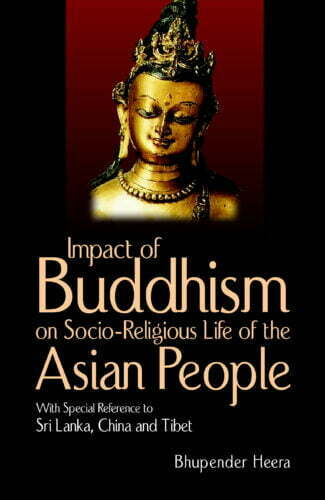
The book analyses the social and cultural transformation of the people of Asia, particularly in Sri Lanka, China and Tibet brought about by Buddhist monks, missionaries and royal personages in a matter of centuries.
Buddhism is an ancient religion that spread across Asia in a matter of centuries and had a rare kind of influence on the social and religious life of the Asian peoples. The volume stresses on the social and cultural transformation brought about by Buddhism when the royalty in these countries adopted the religion and propagated it. It deals with Sri Lanka’s evolution into a stronghold of Theravàda Buddhism and China and Tibet’s contribution to the Mahàyàna and Tantrayàna Buddhist traditions. It takes up the royal patronage and zeal of missionaries, Buddhist influence on the social structure and personal names, impact of Buddhism on customs, lifestyle, food habits and spread of education and learning in Sri Lanka. It covers factors that encouraged spread of Buddhism in China, architectural and art works undertaken there, and the flourishing of Buddhist literature and missionary work under royal patronage in that country. The work captures the effect of Buddhism on Tibetan religious thinking and social life. It also discusses the later socio-cultural transformation of people of nearby countries owing to the missionary zeal of Buddhism in those countries. Throughout, the work refers to numerous legends and accounts for detailing the contribution of monks, missionaries and royal personages. The book will prove immensely valuable to Buddhist scholars keen on studying the evolution and impact of Buddhism in Asia.
The South-East is a cultural perspective aptly named agneyi the direction of the God Agni. It is reflected even in the Sino-Japanese Mahakarunagarbha mandala of the 8th century where Agni is surrounded by sages: Angiras with his consort Gautami and Atreya with his consort Bhrgvi. In the Pao-hsiang Lou pantheon Agni is surrounded by eight rsi’s Angiras, Vasistha, Garga, Markandeya, Gautama, Kasyapa, Shan-ch’eng-ming-yang and Su-chi-i (the Sanskrit names of the last two have to yet to be found). In Indic terms, the conceptual space of SE Asia endows it with the serenity of the mind, the grandeur of structures, the profundity of expression derived from Sanskrit. The SE is the mind ground of the sages, the rishis, and as such the marvellous manifestation of the Hindu-Buddhist genius. This book chronicles the dynamism, the fire, the Agni of the Agneya (SE) direction across the past that shades into the present with tomorrows inside.
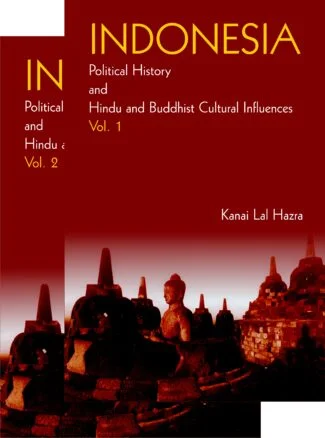
The two volumes present a comprehensive study of political, cultural and religious history of Indonesia. Of encyclopaedic significance, they take up a whole gamut of themes relating to history, politics, religion, literature, art and architecture, and sculpture of Indonesia. The volumes will immensely benefit scholars of political history, religion and culture specialising in South-east Asia and its links with other regions of Asia.
The two volumes present a comprehensive study of political, cultural and religious history of Indonesia. Of encyclopaedic significance, they take up a whole gamut of themes relating to history, politics, religion, literature, art and architecture, and sculpture of Indonesia. The first volume is on political history of Indonesia. It covers all dynasties/rulers of Indonesia from the earliest Sailendras of Srivijaya to the political scene in current times including the rise of President Sukarnoputri in the recent past. It covers a very wide range of aspects: struggles of dynasties, establishment of empires by the Sailendras, the Indo-Javanese empire of the kingdoms of Mataram, Kadiri, Singhasari and others, emergence of new cultures, decline and fall of the Hindu kingdom, colonial invasions and growth of nationalism. The second volume begins with the history of East Timor. It makes an in-depth survey of Hinduism, Buddhism and Islam in Indonesia, covering their establishment, contacts with other places owing to their religious links, modes of religious worship and rituals. The art, architecture and sculpture of the country symbolising Hindu, Buddhist and Islamic traditions are surveyed meticulously. A detailed account of Indonesia’s literature involves study of writers and their works, and languages and characteristics of the literature at various times. The volume discusses chronicles, historical writings, writings on medicine and on numerous miscellaneous topics, throwing light on their contents and styles of expression. The volumes will immensely benefit scholars of political history, religion and culture specialising in South-east Asia and its links with other regions of Asia.
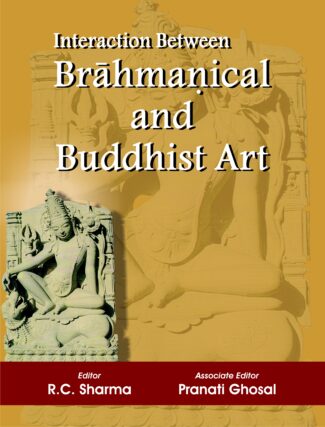
The present volume is an outcome of the expert discussion on the theories of Brahmanism and Buddhism, in an International meet at Jnana-Pravaha. Philosophical and artistic interaction between the two have been brilliantly discussed with references to famous places as well as texts to unravel basic principles.
Brahmanism and Buddhism adopted symbol and image worship almost simultaneously in the pre and early centuries of the Christian era. With the passage of time, the forms and plethora evolved and despite several distinctive features common elements between the two religions continue and fructified. The fact is revealed both at the philosophical and artistic levels. The present volume is the outcome of the well discussed theories by the experts, assembled in an International meet on the subject in the second week of February 2003 at Jnana-Pravaha, Varanasi, organized in the joint collaboration of Acharya Narendra Dev International Research Institute for Buddhist Studies, Lucknow. The book incorporates a good number of papers dealing with philosophical and artistic interaction between Brahmanism and Buddhism for more than a millennium years. The interaction was largely peaceful but there were certain phases in the Medieval period when clash also surfaced. It was most profound in the region of art and architecture, as a result of which some similarities as well as unique features between the two had emerged. All these aspects have been brilliantly discussed and specific references to famous places associated with Brahmanical and Buddhist arts in Asia as well as textual references to unravel basic iconographical principles have been adequately reflected in the present volume. The book besides being useful to scholars and students researching on ancient Indian art and architecture would appeal to general readers interested to know more about Indias glorious art traditions.
| × |
|
Chandogya Upanisad Translation and Commentary 1 x ₹1,215.00 |
| × |
|
Building a Theory of the Indic Brahmi Writing System 1 x ₹360.00 |
| × |
|
Recent Responses to the Philosophy of Wittgenstein 1 x ₹1,620.00 |